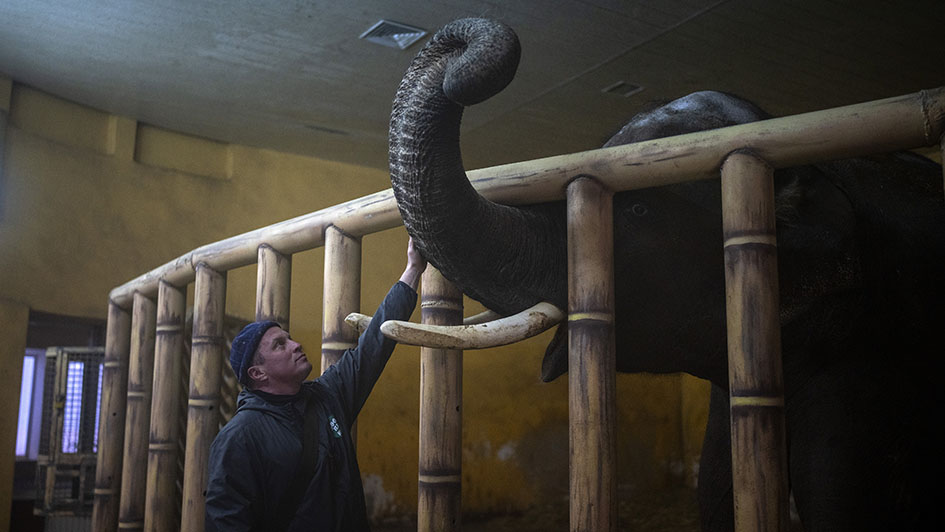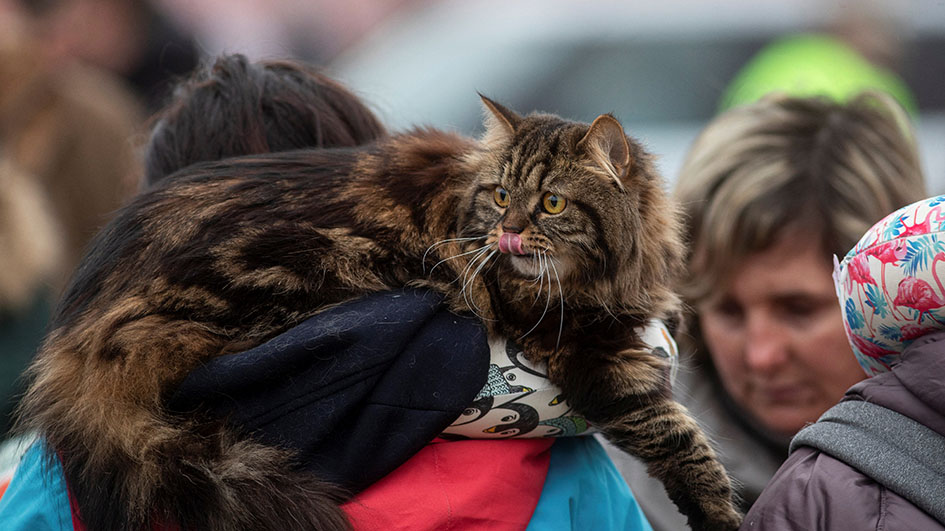While over a million people have already fled war-torn Ukraine since the beginning of the Russian invasion, many have stayed behind, either with the will to fight Russian troops, or simply because they didn't have the opportunity to leave.
Also stranded in Ukraine are the thousands of animals who have spent years of their life in captivity in the country - and are now forced to witness a raging war. Among these there's Tony, Ukraine's only gorilla, living in the capital’s main zoo.
But these animals are not being left alone.
Since Russia invaded last Thursday, Kyiv Zoo has been closed. But staff remained on the premises around the clock, to comfort the animals shocked by the blasts and explosions booming around them.
The animals are under "horrible stress" from the attacks, according to zookeepers. They say that "animals are terrified by the loud sounds of explosions, but our vets are constantly monitoring their condition."
And that's true of all the animals stuck in the many zoos and shelters around the country.

Kyiv Zoo's elephant Horace is being comforted by zoo keeper Kirilo Trantin Kyiv while Russian airstrikes storm the towns surrounding the capital. /AP/Emilio Morenatti
Kyiv Zoo's elephant Horace is being comforted by zoo keeper Kirilo Trantin Kyiv while Russian airstrikes storm the towns surrounding the capital. /AP/Emilio Morenatti
How is the war affecting the animals?
"The first thing is their welfare," says Mark Randell, Ukraine campaign manager for Naturewatch Foundation, an animal welfare charity that has been working in Ukraine since 1994.
"None of them are used to living in a war zone. The levels of stress must be terrific. There are veterinary surgeons on-site to be able to give them tranquillizers. But you can only carry on for a small amount of time."
Another issue is food.
"A few days ago there was two weeks' worth of food for the animals, but presumably that would eventually dry up," says Randell.
"And there's no money going into the zoo to look after it. And there's also the threat of an actual explosion taking place - (the zoo) is very close to Kyiv city center."
Kharkiv Zoo has also been affected by the bombing. Two red wolves have escaped and are still missing. A young lion who had also escaped has been recaptured.
Naturewatch has received no information on the welfare of circus animals in Ukraine.
Why is it so hard to evacuate the animals?
"There are 4,000 animals in the zoo, and the logistics of being able to do anything with those is almost impossible unless we have much notice, and certainly nobody knew what was going to happen," says Randell.
"There are elephants, hippopotamus, huge fish - it would be almost impossible even in peacetime to evacuate a zoo of that size. In war, with explosions going off all over the place, I just don't see how that can be done."
The thousands of animals at Kyiv Zoo aren't the only ones stranded in the capital and the area surrounding it. There's an animal rescue center and a private zoo.
"Some of the animals from one of the zoos have been taken into Poland. And there has been one of the other small private zoos which has lost electricity," says Randell. "So at the moment, we don't know what's happening with those animals, but it doesn't look particularly good for them."
Animals from the Save Wild bear sanctuary near the capital were safely evacuated on Monday and welcomed by Poland's Poznan zoo. The zoo will take care of them as long as the war rages.

Several EU countries temporarily lifted restrictions on the movements of pets to allow refugees to travel with their animals. /Inquam Photos/Virgil Simonescu via Reuters
Several EU countries temporarily lifted restrictions on the movements of pets to allow refugees to travel with their animals. /Inquam Photos/Virgil Simonescu via Reuters
How can people help?
There are a lot of organizations trying to help the animals, either via financial contributions or food donations. But the latter are significantly harder to transport.
Naturewatch is already thinking of the kind of help that would be needed when the war will be over. "There'd be a lot of people who want to help now," says Randell, "but after the war, there's going to be a lot to rebuild for all the animals."
While waiting for that day, "the only thing that can be done is sending donations," says Randell. "Looking into groups in Poland and Romania particularly, Moldova and Bulgaria as well, which are looking to find support in terms of taking material out there; and understanding the situation, sharing on social media, making people aware - that's pretty much all anybody can do at the moment."
You can find a comprehensive list of NGOs supporting Ukraine's animals here.
Source(s): AP

